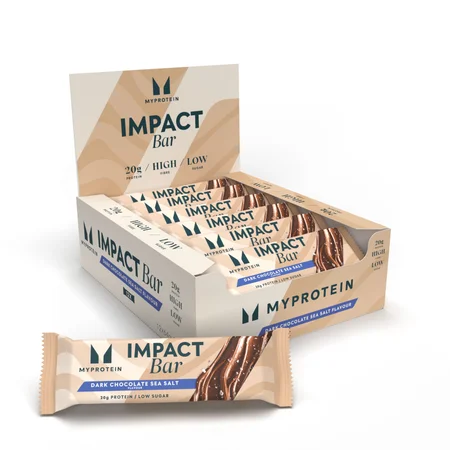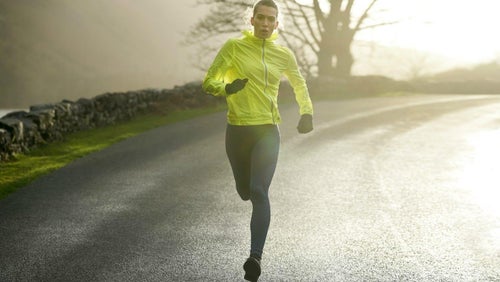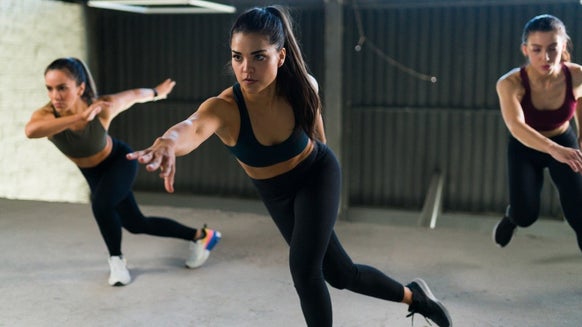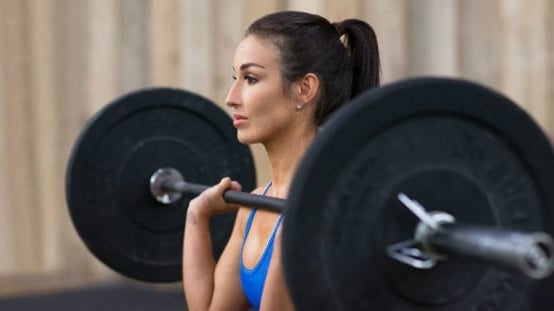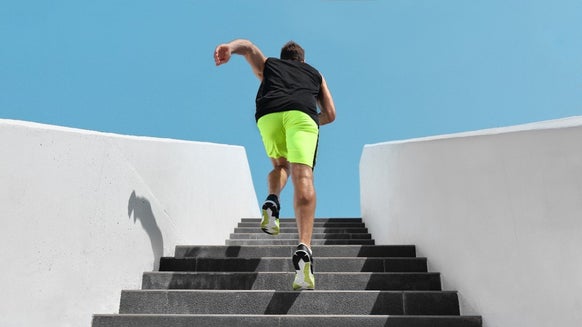The 10 Best Stretches For Running | A Runner’s Guide
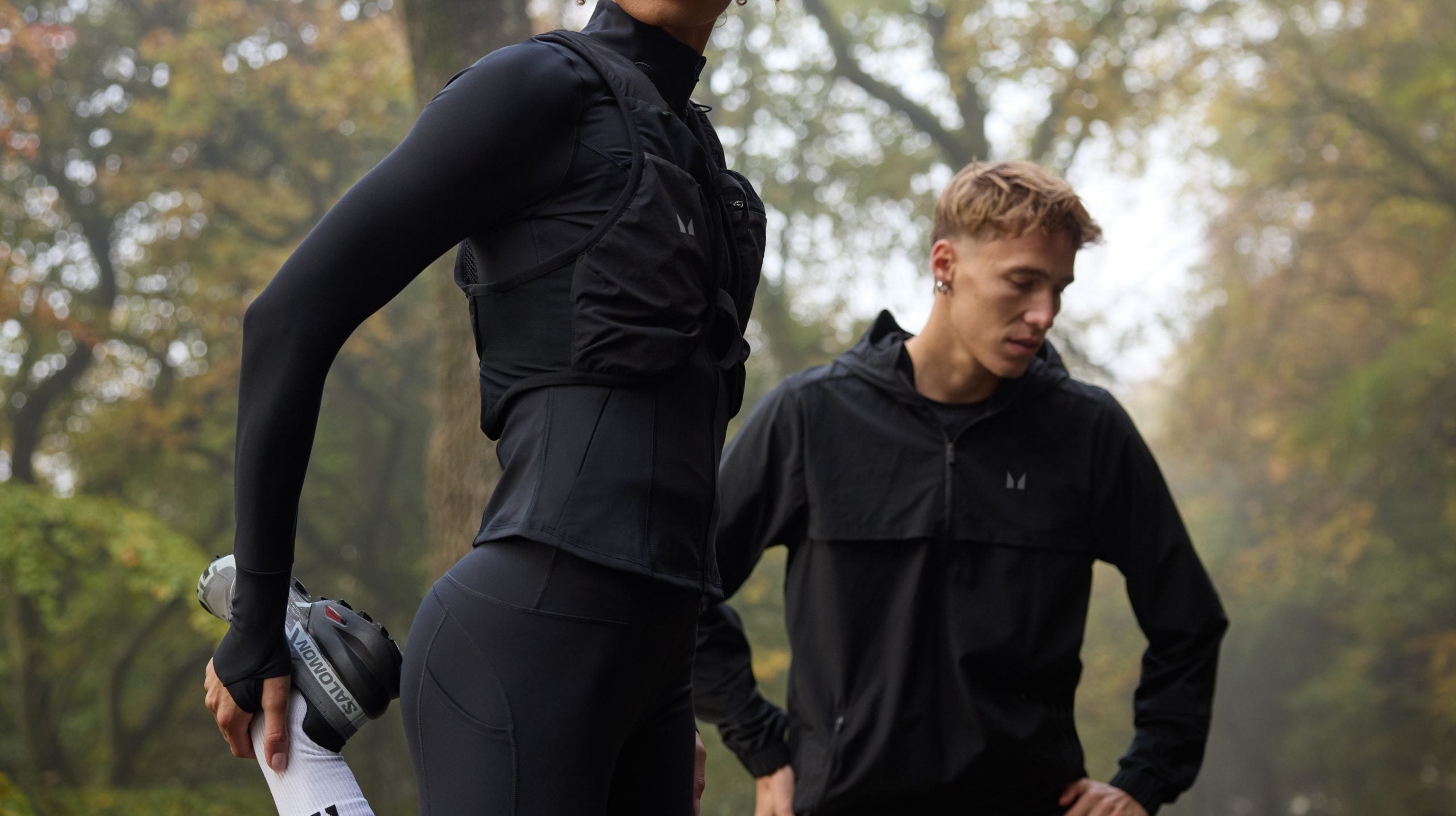
Running is a really popular form of exercise, which has only increased in recent years.
Whether it’s outdoor running on a road, track or up a mountain, running on a treadmill or running on a pitch, you use a lot of different muscles when breaking out of walking into a higher pace.
These muscles all need to be properly looked after to ensure they don’t tighten up, pull your body into postural dysfunction or cause injuries from overuse or from acute movement patterns and muscular imbalances.
Although you might feel a little sore in the legs after a run, these aren’t the only muscles being used. The whole body is actually in use and you could suffer from tightness at any point in the body that could cause uncomfortableness or injury.

Why stretch before running?
Contrary to most people’s routines of just getting out and running, stretching is a really important step to make sure your body is prepared for a run, similar to any physical activity.
Stretching before you exercise will help to warm up the specific muscles you’re going to use to prevent injury and compensation as well as lubricate your joints to make running a lot more comfortable.
You can also get a beneficial metabolic response from warming up making you more efficient in your run and supporting a better training outcome.

Running The 'World's Hardest Marathon'
At 24 hours this isn’t a walk in the park…
When to stretch pre-run
Pre-run stretching shouldn’t take up a lot of time and ideally should be done as close to the run as possible to stop you cooling down and losing the good elastic energy you have built up and the pliability of your muscles.
If you take more than 5 min between your warm up and your exercise, you’re likely to see a decrease in performance. But, if you make your warm up too intense, you might have some negative effects as well such as not being able to maintain speed. [1] [2]

The benefits of stretching
There are 4 main areas that the warm up will help with:
Muscles pre-run
A good quality set of stretches can help to warm up the muscles, increasing heat and they’ll be more pliable, meaning they’ll be able to spring back into position making you more efficient in your run.
Muscles post-run
Stretching will help to relax muscles that’ve just been worked and decrease the likelihood of delayed offset of muscle soreness (DOMS) giving you a more free feeling the next day. It’ll also help reduce compensation effects of tension and dysfunction.
Joints
Moving through a good range of movement before more intense exercise allows for a free range of motion as well as increase the synovial fluid in the joints which help to lubricate and give them a little more freedom to move, plus the feeling of the run can improve with a greater sense of shock absorption.
Energy systems
With an increase in blood flow and enzyme activity from warming up and stretching your body will become more efficient and you’ll be able to run at a faster speed, use a more efficient energy system and feel a lot lighter when you run.

The difference between static and dynamic stretching
While static or holding a stretch is really common in exercise, these are best left for the end of your run (ideally when you are still warm and have the stretch capability to increase flexibility).
Dynamic stretching is a better way to prepare for your activity as this will not only move your body through a good range of movement, you will also get the benefits of an increase in temperature and heart rate which will help kick start you run.
The dynamic stretches are as they sound, more dynamic. So you’ll be moving through ranges of motion and back in a controlled manner to get the muscles warm and stretched.
Getting the most out of your stretches
For dynamic stretching, you should look at roughly 10 reps of different movements getting more intense as the exercises move on to warm the body up in preparation to run. The movements should be controlled and with good form to see the most benefit.
For static stretches, depending on your current flexibility, you should be aiming for a minimum of a 20 second hold of each stretch to maintain the flexibility you currently have.
If you know you are tight in certain areas (commonly in runners this would be the hamstrings, glutes and groin) hold the stretches for 20 seconds, take a deep breath in and breath out as you lower yourself further into the stretch.
It’s really important in all stretching that you don’t feel pain when you stretch as this could be the muscles tensing up, which means you won’t get the flexibility improvements, or it could be your body screaming out to stop.
Try to stretch to the point of a little resistance and the feeling of a stretch before gradually increasing the range you can move each session as you get used to the feeling.
The main muscles that need to be warmed up and stretched pre and post run are:
- quads
- hip flexors
- hamstrings
- calves
- groin and glutes
- the spine and surrounding muscles
The 10 best stretches for running
Pre-run (dynamic)
Leg swings
- Stand with one hand on a wall or support.
- With control, swing one leg backwards and forward to warm up the hip, focussing on the hamstrings and the hip flexors.
- Switch to the other leg.
Reverse lunges with knee drive
- Stand straight and step one foot backwards.
- Drop the knee behind you into a lunge position.
- Step up and forward again, bringing the knee up in front of you as high as possible.
- Repeat with the other leg.
Reverse skater
- Stand straight. Step one foot back and to the outside of your standing leg.
- Drop the knee towards the floor and feel a stretch in the outside of your hip.
- Repeat on the other leg.
Squat jump
- Lower your body with control as low as you can go in a squat.
- Jump up, making sure you point your toes to activate everything.
Plank Walkout with T Rotation
- Stand straight and reach down to the floor (with a slight bend in your knees if you need)
- Walk your hands out to a press up position.
- Step one foot outside the corresponding hand and rotate that hand up towards the ceiling.
- Rotate back down, and repeat on the other foot and hand.
- Walk your hands back towards your toes to repeat.
This one is a real pulse raiser as well so great just before you leave the door.
Post-run
Calf stretch
- In a press up position, cross one foot over the other and lift your hips.
- Walk your hands back a bit to feel the stretch down the back of your calf.
- Repeat by switching which foot is above the other.
Hip flexor/Quad stretch
- Drop to one knee and bring your other foot in front of you (like a lunge position with the knee resting on the floor)
- Tuck your hips and push them forward to feel the stretch in the front of the thigh.
- Make this one a little harder by resting the foot on a sofa or a step.
Hamstring stretch
- Lie on your back, keeping one leg straight on the floor.
- Raise the other one up and hold just above the knee to feel the stretch in the hamstring.
- You can use a long sock or a band over your foot to make it a little easier to hold.
- Repeat but switch which leg is raised.
Pigeon Pose
- From a press up position, bring one knee forward and place between your hands.
- Shuffle your back foot backwards and let your hips drop towards the floor keeping them square.
- Repeat and swap legs.
Frog Pose
- On hands and knees, take your feet and knees as wide as you can.
- Drop onto your elbows and push your hips back towards your heels.
- You should feel the stretch right at the top of your groin.
Extra injury help
These little extras can help if you’ve specific weaknesses. Use during the week immediately before you run after your pre-run stretches.
Clam shells
- Lie on your side and bring your knees slightly forward, keeping your heels together.
- Bring the top knee up and back down.
- Repeat with the other knee on top.
- Add a band just above the knees to make this more intense.
Single leg clock face
- Stand on one leg and glide the other foot towards the following positions on the clock face – 12, 3, 6, 9.
- You should try to reach as far as possible without losing your body position.
- Repeat while standing on the other leg.
Lateral hip dips
- Stand on a step on one leg.
- Drop the other leg off the side only using the angle of your pelvis, keeping it square with the shoulders and off the ground.
- Repeat on the other leg.
Hip Thrusts
- Lie on your back with knees at 90 degrees.
- Drive your hips into the air by pushing your heels into the ground.
Banded knee extensions
- Use a long band around a stable upright in front of you and around the back of one knee, the other foot behind for balance.
- Lower yourself down to bend the knee keeping your torso upright.
- Restraighten and return to the start position.
- Repeat on the other leg.

How to avoid injury when you stretch
Make sure you use good form and technique when you’re stretching.
If in doubt, ask someone you trust to watch and give you feedback on your form.
You should always make sure you’re only stretching to a point of resistance and not feeling pain either in the muscles you are stretching or anywhere else.
For each stretch you should ease into the range of movement, holding at the point of stretch and breath deeply while there.
As your muscles relax, you’ll feel the resistance decrease and you’ll be able to move a little further. It’s really important though not to bounce through the stretch, especially if fatigued from a run.
Make sure the body is warm when you stretch — after a hot shower or bath isn’t a bad time.
Maintaining flexibility and regularly stretching will keep your body in great condition for exercising, but also ensures you’re able to move freely and your body doesn’t compensate the way it moves in day to day activity.
Take home message
Stretching before and after your runs are important to get the most from your exercise routine, but also to ensure you don’t pick up little injuries, lower back pain in particular, or develop muscular imbalance and dysfunction.
Keep the pre-run stretches dynamic with movement and after you run stretch for at least 20 seconds for each muscle, focussing on the Quads, hip flexors, hamstrings, glutes and calves.
READ THESE NEXT:

Running & Weightlifting: Finding The Perfect Balance
Strength training should compliment your running.

Simon started his fitness journey from a young age, and was playing sport as soon as he could roll a ball. This pushed him to compete in a variety of sports from rugby to squash.
After completing an MSc in Strength & Conditioning, alongside a PT qualification, he gained an academic role at the University of Chester. From lecturing to research-based studies, his applied role caters to both team and individual sports.
